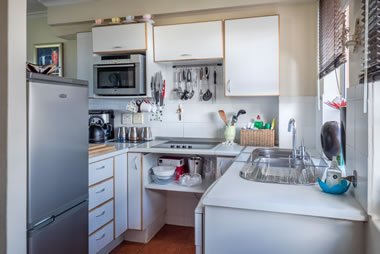Where are the Top Bacteria & Germ Hot Spots in the Home?

If you asked a group of 100 random people which area of their home was most likely to see the most bacteria, what do you think they’d say? Most people would probably think of the bathroom and, more specifically, the toilet. Even though most of us regularly clean the toilet, surely there would be bacteria there more than anywhere else.
Well… you may be surprised – and probably horrified – by the results of a recent swab test of everyday items around the average home. Tests found that bacteria were present in the most surprising places – with more found germs on the handle of the humble kitchen kettle than on the toilet seat.
Which types of bacteria were present in the home?
Swab tests came back positive for E. coli and staphylococcus. The latter came up in swab tests done on the kettle. This makes sense as it is often present on human skin.
Other areas in the home, including the lid of the kitchen bin, had traces of bacteria commonly found in our gut. These bacteria may have been E. coli, and the same bacteria were also found on the television remote control.
Pseudomonas is another bacterium that can cause illness in humans. Swab tests came back positive for this on the splash back around the sink, the washing machine, and the bathroom tap. It was also present on the kitchen taps.
Bacteria focusing on high contact surfaces
When you think about it, there are some surfaces inside the home that we’re far more likely to touch than others. We’re going to wash up several times a day and put the kettle on for hot drinks, so the kettle and the kitchen tap both have high contact status.
So, too, do door handles, as they give us the only way to get in and out of a room. Other areas near the door handles may also present a frequent contact point. Perhaps more so than the toilet seat.
We know it is important to clean the toilet, perhaps as we associate a greater risk of illness from it if we do not maintain a high level of cleanliness. However, we may be more relaxed and casual about other contact points mentioned in this study. The kitchen taps are wiped several times a day, yes… but how often do we do this with a soapy cloth we then reuse in many other places?
Maintaining – or creating – a proper cleaning routine throughout the home
Studies like this do make you feel a little queasy. However, they also inspire us all to look more closely at what we do (and perhaps do not do) as part of our regular cleaning routine.
The study found that many people have been cleaning more often since the start of the COVID-19 pandemic. This, perhaps more than anything else, has led to increased awareness of cleanliness and the ability of bacteria and viruses to remain on surfaces, in water and in the air long after they get there.
Regular disinfecting of touch points throughout the home has become something many of us have done far more since the beginning of 2020 and the coronavirus pandemic. With house keys coming top of the list for items we rarely – if ever – clean, followed by car keys, it’s clear that we could all stay a little safer if we focus on improving our household cleaning tasks.
And if we can take any positives from the Covid-19 pandemic, perhaps this will be among them.
Expert legionella risk management solutions
Legionella Control International is a world-leading legionella and water safety specialist. Our teams of experts support building design and construction professionals, and those responsible for workplace safety.
We will help you to protect your customers and others in meeting your health and safety obligations in this specialist area.
We deliver a range of specialist risk management solutions including risk assessment, design review, regulatory compliance auditing, specialist legionella training, water quality analysis and other services that help keep people safe.


